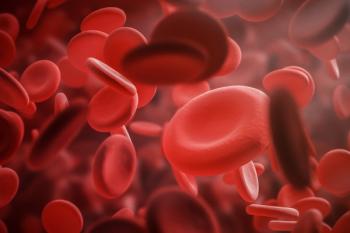
Critical care: R.Ph.s. fill gaps as manpower crisis worsens
critical are manpower shortage
DRUG TOPICS© FOR THE HEALTH-SYSTEM PHARMACIST
Critical care: R.Ph.s fill gaps as manpower crisis worsens
A severe critical care workforce shortage is approaching a crisis level in hospitals throughout the United States. In facilities where the shortages are most severe, health-system pharmacists are rising to the challenge when a scarcity of nurses, doctors, and respiratory personnel is threatening to impact the quality of patient care.
A recent report issued by a consortium of critical care professional societies urged the federal government to take a close look at the manpower shortage and other deficiencies in critical care medicine, before the country enters into a meltdown over this issue.
The report, The Critical Care Medicine Crisis: A Call for Federal Action, asserts that the shortage of qualified healthcare professionals has created a major threat to the availability and quality of critical care services for seriously ill patients. The report goes on to say that an unprecedented and largely unrecognized shortage of physician intensivists in the near future will preclude standard critical care services for large populations of patients with serious illnesses. And if the current trend continues, shortages of these specialists combined with the current shortages of critical care nurses, pharmacists, and respiratory therapists will become severe by 2007 and will worsen by 2030.
Among the contributing factors to the critical care shortage are: the aging of the U.S. population, the fact that the supply of physicians and allied health professionals trained to provide critical care services will remain constant, the limited number of physician residency/fellowship trainee slots, cuts in graduate medical education, the rise in the cost of medical school education, the fact that medical school debt pressures force many physicians to pursue the highest-paying specialties, and the complexity of Medicare reimbursement driving physicians out of the field.
The reporta group effort of the American College of Chest Physicians, American Association of Critical Care Nurses, American Thoracic Society, and Society of Critical Care Medicineconcluded that the combination of these factors creates a self-fulfilling prophecy of a depleted workforce. And because there are fewer critical care specialists, those remaining become overwhelmed and leave the system prematurely.
Among the report's recommendations: improve the efficiency of critical care providers, redistribute the current critical care workforce, and simplify the reimbursement system. One recommendation in particular calls for increasing the supply of critical care providers by eliminating caps on the number of residency training positions and increasing the federal funding for medical education, including residency programs. Industry insiders contend this would likely have an immediate and positive impact on the manpower shortage.
Janet Teeters, R.Ph., director of accreditation services at ASHP, said that the society's critical care pharmacy residency program (CCPRP) is growing by about 10% a year. "We hope that more people enter both our CCPRP as well as our first-year general residency program so we can keep feeding the pipeline," she said. Most CCPRPs are in larger facilities and are limited to one resident per year at each facility. Among the factors driving the interest in this specialty residency is the fact that many hospitals are now making it mandatory for pharmacists who want to work in a critical care environment.
"The patient care therapy in the critical care area is becoming so complex that pharmacists need the training," Teeters told Drug Topics. The consortium's report noted that healthcare teams that have specialized training in critical care often demonstrate a reduction in mortality in the intensive care unit as well as reduced healthcare costs. But she acknowledged that a cutback in funding from the Centers for Medicare & Medicaid Services has been an obstacle to expanding the CCPRP. Last year, CMS funding was reinstated for ASHP's first-year residency program but not for specialized programs. "We're a little concerned," she said. "We continue to see interest and growth in these programs, but we can't get the government to sustain them."
At the Mayo Clinic in Rochester, Minn., CCPRP program director Lance Oyen, Pharm.D., receives 10 to 15 applications a year for his hospital's critical residency program but has only one slot available. "We would have added a second or third residency position, but there are funding issues. We have the risk of CMS cutting our funding for specialized residency programs. There's lots of good people out there looking for this training," he said.
In facilities where nursing and medical staff shortages are significant, pharmacists are assuming additional duties and responsibilities. Oyen said that a cutback in medical residencies, for example, has impacted the ability of doctors to cover the ICU adequately and that has led to an expanded role for R.Ph.s in ensuring the continuity of care. The pharmacy presence is being felt in all of Mayo Clinic's ICUs, where pharmacists not only round with medical teams but also fill gaps in drug therapy decision-making as well as address dosing issues.
How important is the critical care residency? Oyen said that it's of growing importance because more patients are critically ill. "The ICU is a reflection of the growing acuity in the hospital, and for that reason we have more of a need for pharmacists who are on the cutting edge of current practice."
In some instances, the expertise of a pharmacist is magnified even more in critical care because conditions are changing so rapidly with these patients. "It's not like you can see these patients once a day, review their profile, and come back tomorrow. You have to stay on top of them the entire time," said James Jorgenson, director of pharmacy at University Hospital in Salt Lake City.
Ideally, Jorgenson said, you want to be able to hire a pharmacist coming out of a clinical care specialty residency with specific critical care training. "Where I see the problem being manifested is there are not enough of these people out there. Some facilities are hiring pharmacists who really don't have the training or expertise to work in critical care, but that's all they can get," he lamented.
At the Detroit Medical Center, a level one trauma center with a 92-bed emergency department, pharmacists are making a big difference in the outcomes of patients needing critical care. Denise Rhoney, Pharm.D., director of the critical care pharmacy practice residency program, said pharmacists bring a lot to the table, including evaluating patients' medications, lab, and hemodynamic data, as well as rounding with medical teams, providing input on new recommendations for drug therapy, and responding to all trauma codes.
"Studies show the value of critical care pharmacists and how they can help reduce drug errors and lower costs in the ICU," said Rhoney. She pointed out that the residency program is an intensive 12-month clinical experience during which pharmacists learn how to care for patients in a critical care unit and are also required to complete a research project.
Anthony Vecchione
Tony Vecchione. Critical care: R.Ph.s. fill gaps as manpower crisis worsens.
Drug Topics
Aug. 23, 2004;148:HSE1.
Newsletter
Pharmacy practice is always changing. Stay ahead of the curve with the Drug Topics newsletter and get the latest drug information, industry trends, and patient care tips.


















































































































